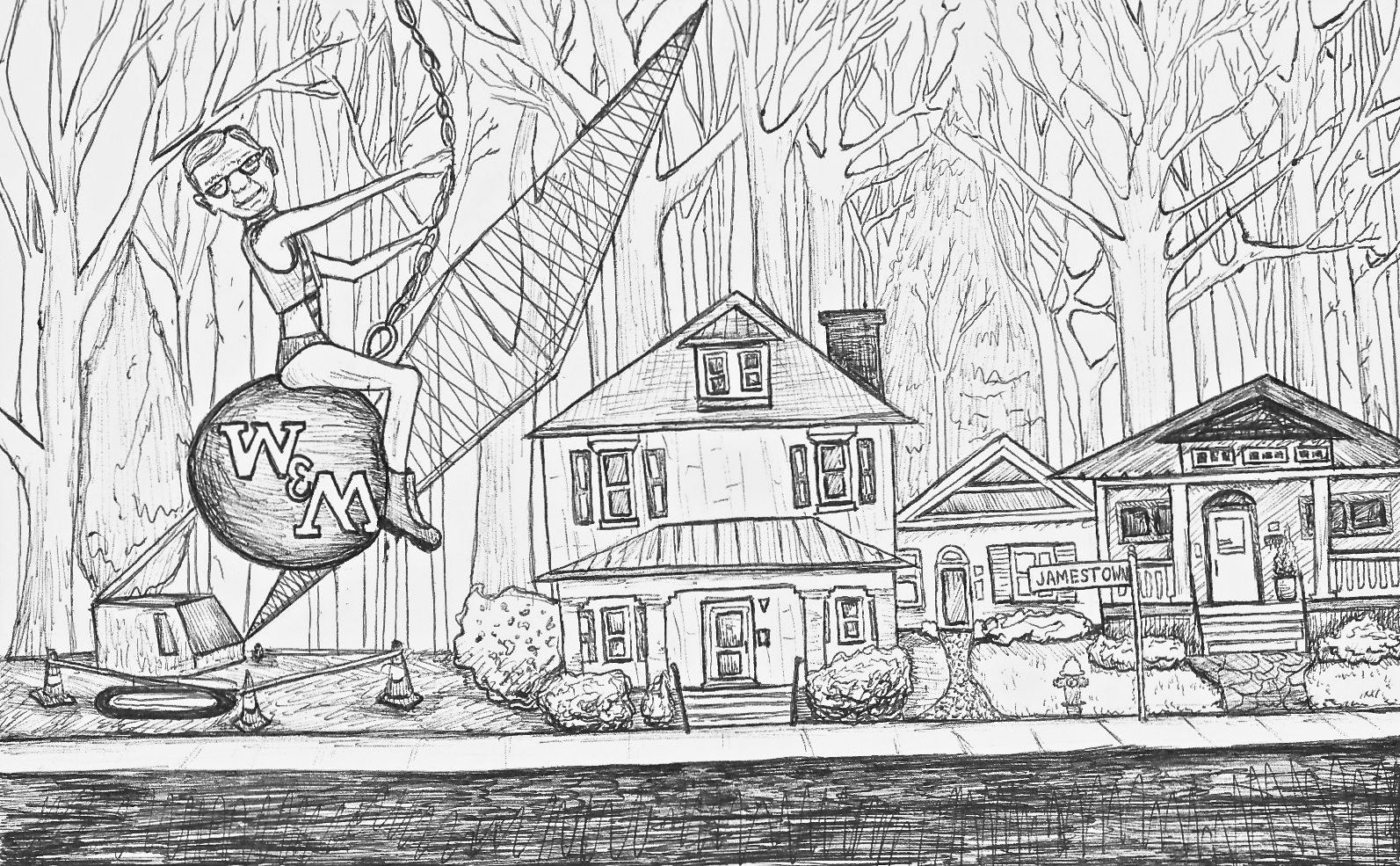The College of William and Mary’s plan to demolish nine houses on Jamestown Road, named endangered historic sites by Preservation Virginia, goes directly against the wishes of the Williamsburg neighborhoods involved and the value of history on which the College prides itself.
The College’s master plan for the area would include new sustainable office buildings and a road to provide better access to the Admissions Office parking lot, but a better plan which preserves the houses is available and should be pursued.
While sustainability and the need for more parking are valid concerns, the historical integrity of these houses is far more valuable. Demolishing these historic sites is not the way to go about a sustainability movement on campus. Moreover, the construction of a parking garage and a new road do nothing for sustainability efforts — especially when the College has the ability to renovate these buildings into more sustainable office space without demolishing them.
Additionally, the College’s choice to overlook the historical value of these properties (notably after Preservation Virginia has named them some of the most endangered historic sites in the state) would be a direct contradiction to value the College often emphasizes as a defining part of its identity. While these houses don’t hold the same campus-wide familiarity or grandeur as the Sir Christopher Wren Building, they still maintain their historical significance as an integral part of the Williamsburg and William and Mary communities for those who grew up with them. These houses were built by professors at the College in the early twentieth century as lodgings, and many people have precious memories tied to them. The College needs to take the historical value of these buildings into account when assessing its master plan decisions.
Another salient point regarding the decision to demolish these houses is the disregard for the neighborhood councils’ concerns. In addition to the loss of historically significant sites, both the Pollard Park and Chandler Court neighborhood councils have protested the College’s plans due to the potential disturbances of construction, light pollution and traffic. These are community members who not only tolerate but genuinely support the College, and to disregard their concerns will tarnish the College’s relationship with the wider Williamsburg community. There is something to be said when the construction of a road and parking garage, endeavors that seem highly corporate in nature, override the concerns of valuable community members.
The College appears to be taking the easy way out by opting to demolish these buildings rather than renovating them. With both the homeowners’ associations and Preservation Virginia already weighing in on the issue, the College should feel the responsibility to mobilize its outreach abilities to alumni and others with connections to these houses to help preserve them. The Board of Visitors needs to take these concerns seriously and be open to compromise — not only to maintain good relationships with the Williamsburg community and the College’s reputation for valuing history, but because, simply put, the preservation of these sites is the right thing to do.
Flat Hat Editor-in-Chief Áine Cain recused herself from the staff editorial.

